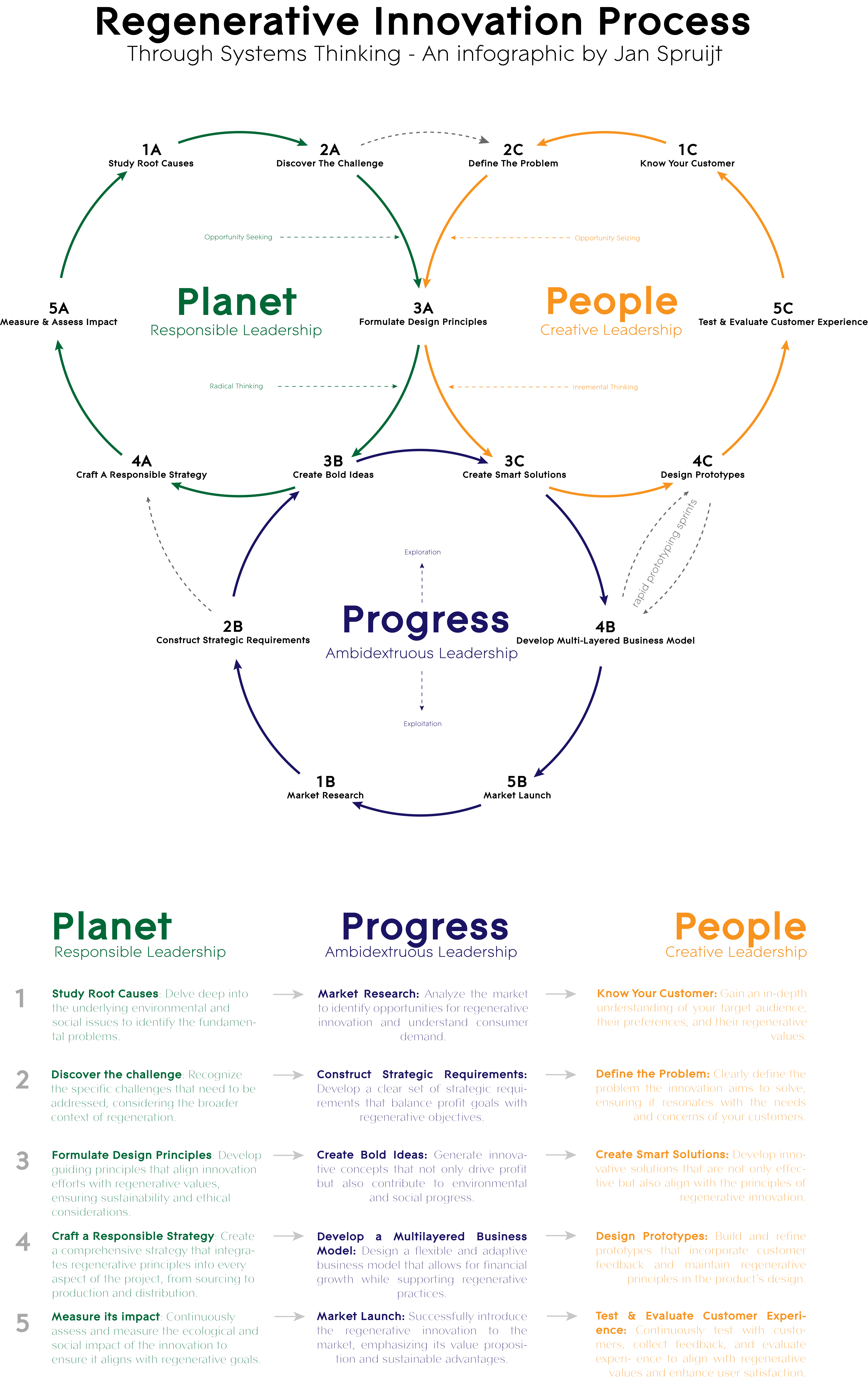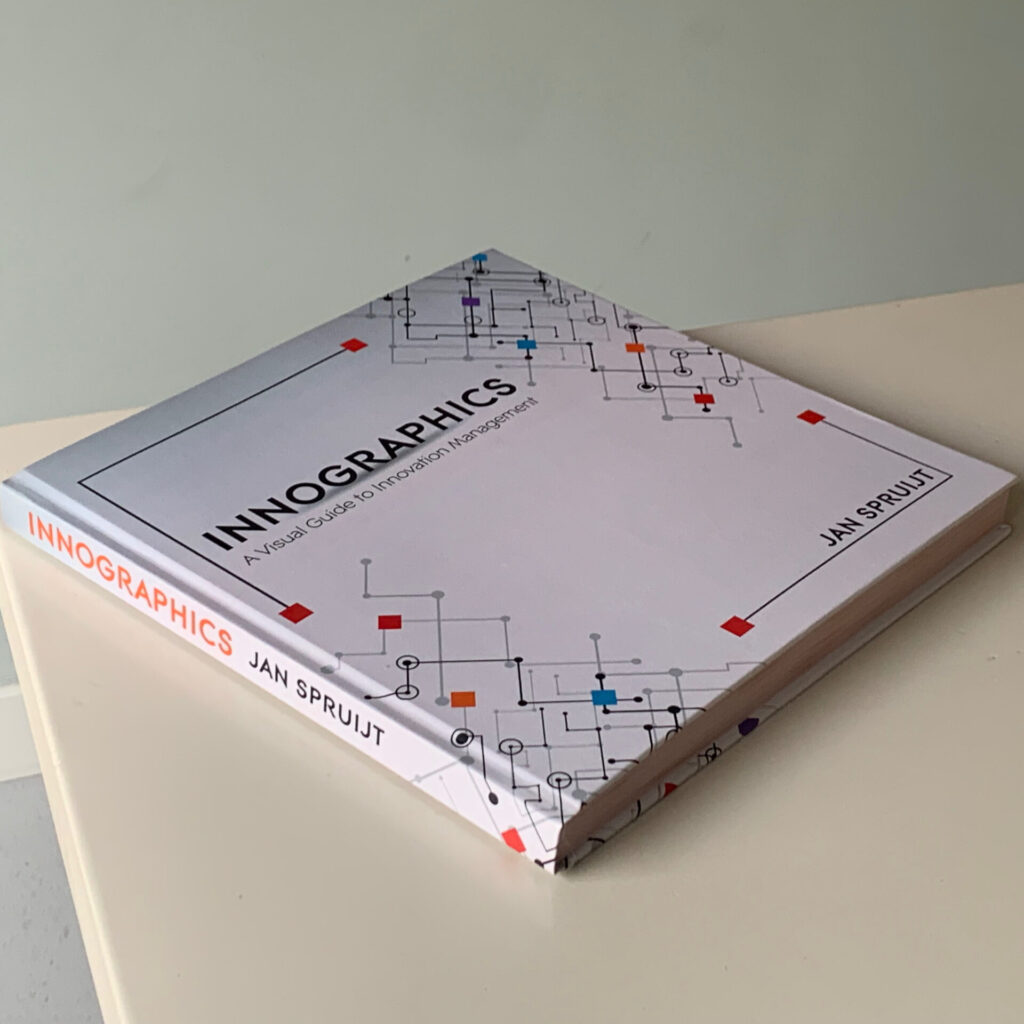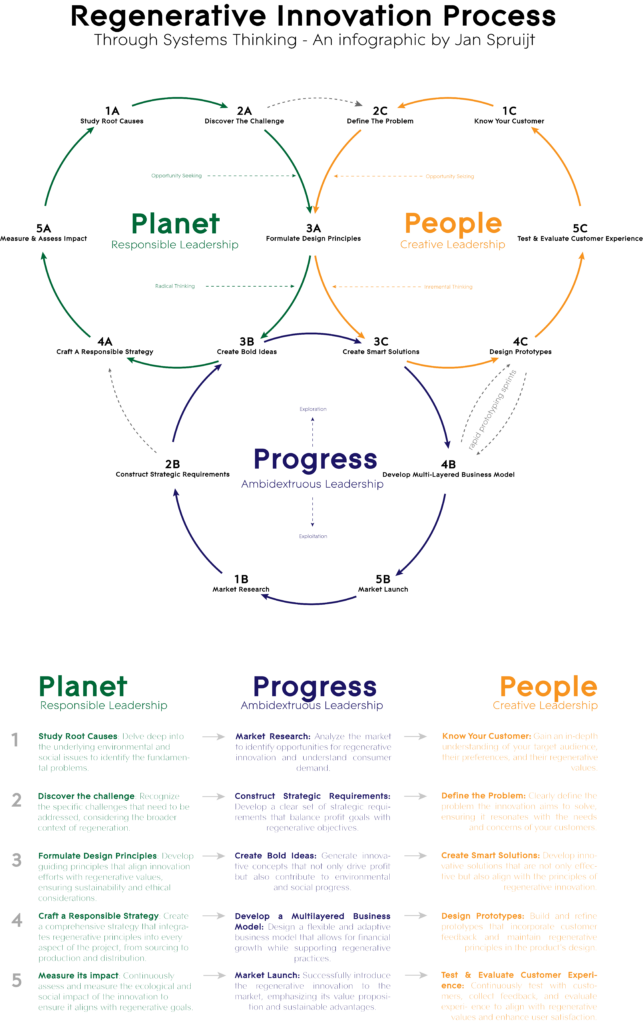About a month ago, Kasper Benjamin Reimer Bjørkskov, posted a message on LinkedIn that contained an impressive methodology to look at regenerative systems thinking. The idea sparked my mind and I gave it a lot of thinking during the last few weeks. And, although I explicitly do acknolwedge the strength and simplicity of the model that was proposed, I believe from a theoretical perspective, it could be improved a bit. Let me first paraphrase the initial post and infographic:
🌍 Regenerative System Thinking:
Bridging the Gap Between Intent and Action 🌱While technology is a powerful tool in our fight against the climate crisis, it alone can’t drive the change we need. We’ve done well in raising awareness about sustainability, but there’s a gap between understanding and action. It’s time to bridge that gap! To truly combat the climate crisis, we must intertwine the realms of technology, humanities, and social sciences. After all, the root of the crisis lies in human behavior. Only by altering our behaviors can we hope to find a solution. 🔗 By merging the insights from social and natural sciences, we can ensure that knowledge isn’t just acquired but acted upon. The current system often makes the effort seem greater than the reward, creating an intention-action gap. But through systemic design, we can offer a holistic understanding of societal and ecological needs. To Translate complex, real world challenges into solutions that creates positive social and environmental impact, for all, we need regenerative system thinking.
Regenerative System Thinking. 6-step approach to Regenerative System Thinking:
1️⃣ Empathize & Observe:
1A: Empathize: Engage deeply with people to understand their perspectives and identify the barriers they face.
1B: Observe: Delve into the system’s intricacies to comprehend its functioning and dynamics.2️⃣ Define & Explain:
2ADefine: Pinpoint the specific challenges and problems faced by individuals.
2B:Explain: Grasp and articulate how the system operates, shedding light on the root causes of the problems.3️⃣ Ideate: Brainstorm innovative solutions that cater to both human needs and the planet’s well-being.
4️⃣ Design: Craft comprehensive strategies and solutions that serve both humanity and our environment.
5️⃣ Prototype: Develop tangible prototypes to test and refine ideas. Remember, action often brings clarity and deeper understanding.
6️⃣ Evaluate: Rigorously assess the impact of the solutions on both the system and its people, ensuring alignment with our regenerative goals.
https://www.linkedin.com/posts/kasper-benjamin-reimer-bj%C3%B8rkskov-660a4899_regenerativethinking-climateactionnow-activity-7117382272009269248-2JEU?utm_source=share&utm_medium=member_desktop
Together, let’s turn understanding into impactful action. 🌟🌍 #RegenerativeThinking#ClimateActionNow

Turning a social model into a hybrid model
- My primary feedback pertains to the model’s reliance on a 2P basis, whereas the literature suggests that a 3P basis might lead to more effective outcomes. The Triple P framework is often referred to as People, Planet, Profit, though the latter may be replaced by Progress to encompass a broader perspective on social innovation. Please refer to sources such as Dwivedi & Weerawardena (2018), McMullen & Warnick (2016), Weerawardena et al. (2021), and Saebi et al. (2019).
- Another change in perspective is that systems thinking should not be limited to the Planet aspect of innovation. To exclude consideration of people and progress from systems thinking, in my opinion, would not constitute true systems thinking. I believe that the combination of these two (or three) processes could be referred to as systems thinking. You can find further insights in sources like Spender et al. (2017), Shepherd et al. (2015), and Rossignoli et al. (2018).
- Lastly, the iteration of processes outlined in the initial model does not align with existing literature and practical execution of innovation. You can reference works such as Crossan & Apaydin (2010), Barney & Felin (2013), Miron-Spektor et al. (2018), Bryan et al. (2021), Gans et al. (2019), and Landry et al. (2002) for a more accurate representation of how innovation is typically executed.
Therefore, I’ve designed a new infographic that more closely resembles regenerative innovation processes using systems thinking. In the dynamic landscape of innovation, the pursuit of regenerative progress stands for merging sustainability, profit, and human-centric principles into viable offerings. In this innovative model, three distinct but interwoven processes unfold in parallel, converging at Step 3 to craft a regenerative future that harmonizes the planet, progress, and people. This model encapsulates the essence of responsible leadership, ambidextrous leadership, and creative leadership, each playing a pivotal role in shaping regenerative innovation.
- Responsible Leadership (Planet) requires innovators to study the root causes of environmental and societal challenges, recognizing that regeneration begins with a deep understanding of the issues at hand. At Step 3A, leaders collaboratively formulate design principles that embrace ecological and ethical considerations, creating a blueprint for responsible strategy. This strategy, implemented with meticulous care, ensures that regenerative innovation is continually measured and monitored for its impact on the planet.
- Ambidextrous Leadership (Progress/Profit) unfurls a visionary path through diligent market research, seeking opportunities where profit can be harmonized with regenerative principles. At Step 3B, innovators craft bold ideas that resonate with the sustainable future they aspire to create. Within this collaboration, a multilayered business model emerges, serving as a robust platform for regenerative innovation. The model provides the necessary scaffolding to launch regenerative solutions into the market successfully.
- Creative Leadership (People) places the human element at the heart of regenerative innovation. By knowing their customers intimately, innovators ensure that solutions are not only ecologically sound but also responsive to the needs, desires, and values of the people they serve. At Step 3C, creative leaders join forces with their counterparts in Ambidextrous Leadership, forging smart solutions that prioritize the well-being of both the planet and humanity. They craft prototypes that are not only effective but also user-friendly, culminating in an evaluation process that centers on the customer experience.
This three-pronged approach to regenerative innovation redefines the boundaries of progress, profit, and sustainability. The magic lies in the convergence of these three leadership paradigms at Step 3, where ideas, strategies, and solutions synergize to create a regenerative force greater than the sum of its parts. Together, they pave the way for a future where responsible, ambidextrous, and creative leaders collaborate to shape a world that is not only profitable but also harmoniously interwoven with the planet and its people.

This infographic is part of the book Innographics: A Visual Guide to Innovation Management
Download a 32-page preview for free
Including 2 infographics, 2 chapters and an overview of 28 innographics.
☑ I agree with opting in for the newsletter, our terms and privacy policy.


![Regenerative Innovation Process Through Systems Thinking [Infographic] Regenerative Innovation Process Through Systems Thinking [Infographic]](https://openinnovation.eu/eu/wp-content/uploads/2023/10/regenerative_innovation-768x350.png)